Heritage Apple Descriptions
The Open Orchard Project has saved hundreds of heritage apples to pass on to future generations. Robyn will post up the first batches she has manually identified over the last few years and then add to them over time as she finds a match. We are hoping to get the interesting but 'tricky to identify' apples DNA tested in the future which will speed the process up. We estimate we will have over 400 varieties saved from the 1,400 varieties sold in NZ to the European settlers of Southern NZ in 1860-1910.
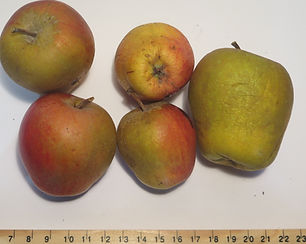
Adams Pearmain
From Herefordshire, England 1830. They are tall pear-shaped apples that have a lovely nutty flavour and can be grown in wet areas without getting fungal black spot. Half the apple tends to be green and the other half red.

Brownlees Russet
These apples covered in russet are not affected by hail or birds, so they are a great, trouble-free fruit. From Hertfordshire 1848. Ready to pick in April. They are very dense so they are great cut up for a cheese board.

Devonshire Quarrendon
…EAT…EARLY SEASON
Thought to have arisen in Devon, but may have originally come from France. First recorded in 1678. Fruits are sweet, crisp and juicy with a distinctive aromatic flavour. Harvest mid-February
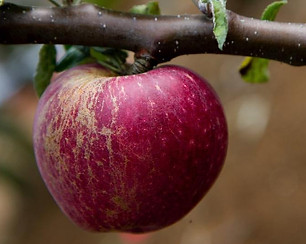
Kingston Black
.......CIDER...........MID
Kingston Somerset late 1800’s April - Small yellow with maroon flush. Excellent Cider apple-vigorous tree

Biesterfielder Renette
Originated at Castle of Biesterfelder, Lippe, Germany. Introduced in 1905. Fruits have fairly coarse, soft creamy white flesh with a sweet subacid and slightly aromatic flavour.
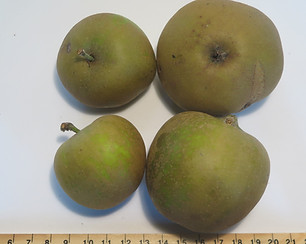
Brownlees Russet
… EAT … LATE SEASON
Hertfordshire UK 1848. Late…May. Self-fertile. Medium size, slight brown/red flush and brown russet. Juicy crisp and sweet. Good crops but not regular. Tolerates cooler, wetter climates.
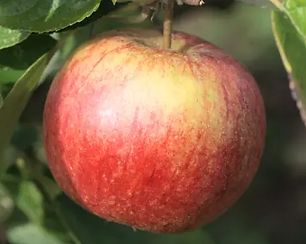
Ellison’s Orange
...EAT …EARLY SEASON
Raised by Rev. C.C. Ellison, Lincolnshire. First recorded in 1904. Fruits have soft, juicy flesh with a rich and strong aniseed flavour. Cox Orange cross, ready mid-March.

Kidd’s Orange Red
…EAT …MID-LATE SEASON Greytown NZ, 1924. Cox Orange X Delicious. Mid/late - April/May. Crimson with dark stripes, juicy, crisp and sweet, strong flavour. Keeps well, reliable cropper but leave on tree when possible for best flavour. Good for cooler areas.
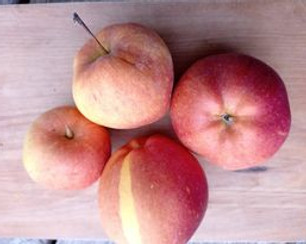
Priscilla
…EAT
Indiana 1972. One of the earliest products of the famous collaboration between Purdue, Rutgers and Illinois universities (hence the "PRI" in the variety name) Priscilla is one of the most disease-resistant apples available. Red striped. Eat fresh off the tree.

Reinette de Canada
…COOK + EAT …MID-LATE SEASON (TRIPLOID)
1771 Normandy France. Mid-late season, eating or cooking. Good flavour and good keeper. In many old Southland 19th Century orchards, highly recommended!
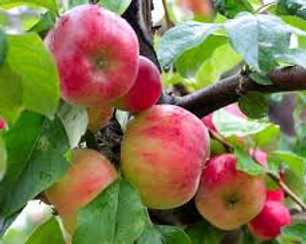
Stayman’s Winesap
…COOK …LATE SEASON (TRIPLOID)
First raised by Dr. Stayman of Leavenworth, Kansas, USA 1866. An old favourite USA cooker.
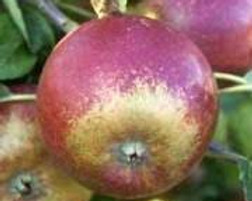
Tydeman’s Late Orange
…EAT …LATE SEASON …KEEPER Kent (East Malling Research Station) 1930. Laxton’s Superb X Cox Orange. Very late dessert apple, picking May. Keeps very well in natural storage through until following spring. Medium size, roundish to slightly conical shape, golden yellow tinged green with orange-red flush. Flesh cream, firm, crisp, sweet, sub-acid and aromatic. Vigorous tree with high yield. Prefers cool and dry.

Click here to add your own content, or connect to data from your collections.

Autumn Pearmain
This is one of the oldest English eating apples, dated from around 1500's. Ready to eat in late March. It has lots of russeting in the skin but the browny red colour shines through.

Claygate Pearmain
These are from Claygate, Surrey before 1822 and are esteemed as a first rate dessert (eating) apple. More uniform in colour and very light russeting.
_JPG.jpg)
Egremont Russet
A classic English russet apple from the Victorian era that is almost completely russeted. A good balance between sweetness and sharpness. The flesh seems quite dry and gets drier with keeping - it is moist rather than juicy. Traditionally described as "nutty", the flavour is more delicate than most varieties, and quite sweet. Both the flavour and the soft flesh are reminiscent of a firm pear.
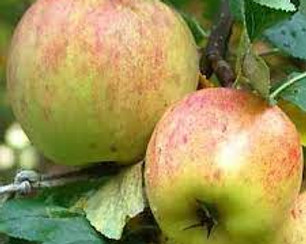
Fairbelle or Belle Bonne
......EAT + COOK .......MID
Late March-April. Large size, rosy red. Excellent cooker and dessert apple. Cooks to a pulp. Very healthy disease resistant tree.

Black Prince
... COOK + EAT... EARLY-MID SEASON
Large apple with dark red skin to eat fresh or cook later.

Cornish Aromatic
…EAT …MID SEASON …KEEPER Originally found growing in Cornwall. It was brought to notice in 1813 but thought to be many centuries old. Fruits have firm, rather dry flesh with a rich, aromatic flavour. Knobby exterior with yellow perfumed flesh. Sweet, sharp, pear drop and spice flavour. Keeps 4-5 months.

Jonagold
…EAT …MID SEASON …KEEPER (TRIPLOID) 1943 New York. Golden Delicious X Jonathan. Dark red with stripes. Good keeper.

Merton Russet
...EAT ...MID SEASON
England 1921 Sturmer crossed with Cox Orange. Ready April keeps 4-5 months. Yellow flushed with dull red and russeted. Firm flesh, crisp, tender and sweet.

Ralls Janet
… EAT …MID SEASON
French pre 1800 or USA? Late season Yellow/green with shades of red stripes with yellow flesh. Medium-large, crisp juicy excellent keeper. Heavy and reliable cropper.
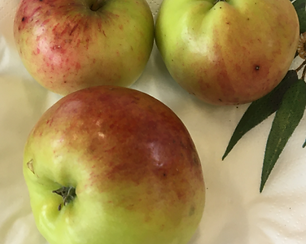
Rokewood
...EAT ...MID SEASON
Australian, ready April. Lovely crisp sweet red and green eating apple. Good, reliable cropper. Healthy, disease free.
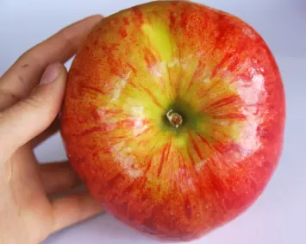
Twenty Ounce
…… EAT + COOK…..MID
New York 1844. Very large fruit, red skinned that can be used for eating or cooking.
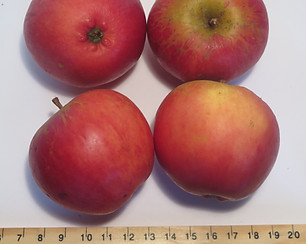
Worcester Pearmain
....EAT……. EARLY
Mr Hale of Worchester England 1874. Gorgeous strawberry hint in flavour. Red stripes over green. Crisp and juicy. White Flesh. Heavy regular bearer - loved by children.

Click here to add your own content, or connect to data from your collections.

Belle de Boskoop
This is the cooking apple cherished by those from the Netherlands. It was brought to England in 1897. It is a solid disease-resistant tree with dry, russeted and highly coloured skin. Good for cider and cooking when it is fresh but after 4-5 months it is sweet to eat.
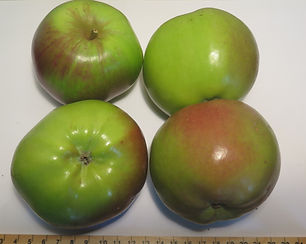
Cornish Longkeeper
This is the one apple that my grandchildren can eat in December. For the first 6 months it's a cooker, then you can eat it, like the Belle de Boskoop. It is heavy and shiny, mainly green with a red blush. It's distinguishing feature is the red colour radiating from the stalk.

Keswick Codlin
…EAT + COOK …EARLY SEASON Early Season cooks up soft and fluffy. Doesn’t keep long - 2-3 weeks - good for processing.
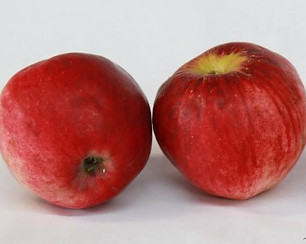
Alexander
… COOK + EAT… MID
Russia 1700’s. Very large Apple, very attractive shade of pink.
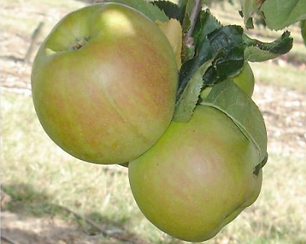
Blenheim Orange
… EAT + LATE SEASON …KEEPER (TRIPLOID)
Originating in 1740 in Woodstock, Blenheim, Oxfordshire, England. Mid/Late, May/June
large flat round, yellow with red stripes. Keeps 3-4 months.

Early Julian
(AKA Norfolk Beefing) …COOK + BAKE ...LATE SEASON (TRIPLOID) UK 1700’s. Raised in Norfolk, England. First recorded in 1807. Fruits have very firm, coarse textured, juicy flesh which is very acid. Keeps its shape when cooked or baked.

Kentish Fill Basket
…COOK + EAT ...MID-LATE SEASON Kent, England, 1820. Mid-late season. Large pale green apple with red streaks. Excellent for dessert or processing. Vigorous disease resistant tree.
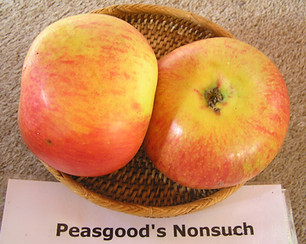
Peasgood Non Such
…EAT + COOK …MID SEASON (TRIPLOID)
Raised (reputedly) by Mrs. Peasgood who is said to have grown the tree in a pot from a seed of a ‘Cathead’, Lincolnshire, about 1858. Flattish round, very large apple. Golden yellow-greenish with bright crimson flush. Flesh yellowish, soft, very juicy, sub-acid and aromatic. Pulps up well when cooked. Growth vigorous - makes a large spreading tree. Good cropper.
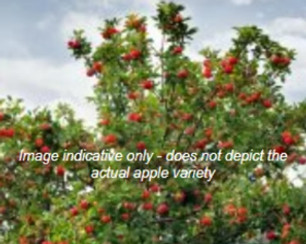
Red Rose
…EAT …SEASON UNKNOWN
Old Mr. Sullivan’s (Sullivan’s Nursery) favourite roadside apple. Rosy red.

Ross Non Pareil
…EAT …MID SEASON
1802 Meath Ireland. Fruits have firm, rather dry flesh with a rich, aromatic flavour. Eating apple, ready late March/ early April.
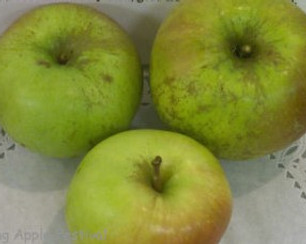
Sturmer Pippin
…COOK + EAT + CIDER …LATE SEASON …KEEPER
1800’s Suffolk. Sturmer has blushed, green/bronze skin with an acidic, aromatic, sweet and juicy flesh that is very firm. This variety makes excellent cider and is great cooked. The fruit is very high in Vitamin C. It is a compact tree with low vigour meaning it needs little pruning. Tolerates cold. Very popular in NZ home orchards pre-1970’s.
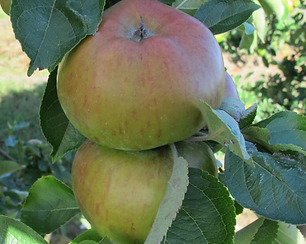
Yorkshire Greening
…COOK + SAUCE …MID SEASON …KEEPER (Yorkshire Goose Sauce) Large, roundish, irregular, and flattened. Skin dark green, sometimes striped with dull red. Flesh white, and pleasantly acid. One of the best kitchen apples. April - keeps 3-4 months.

Click here to add your own content, or connect to data from your collections.
